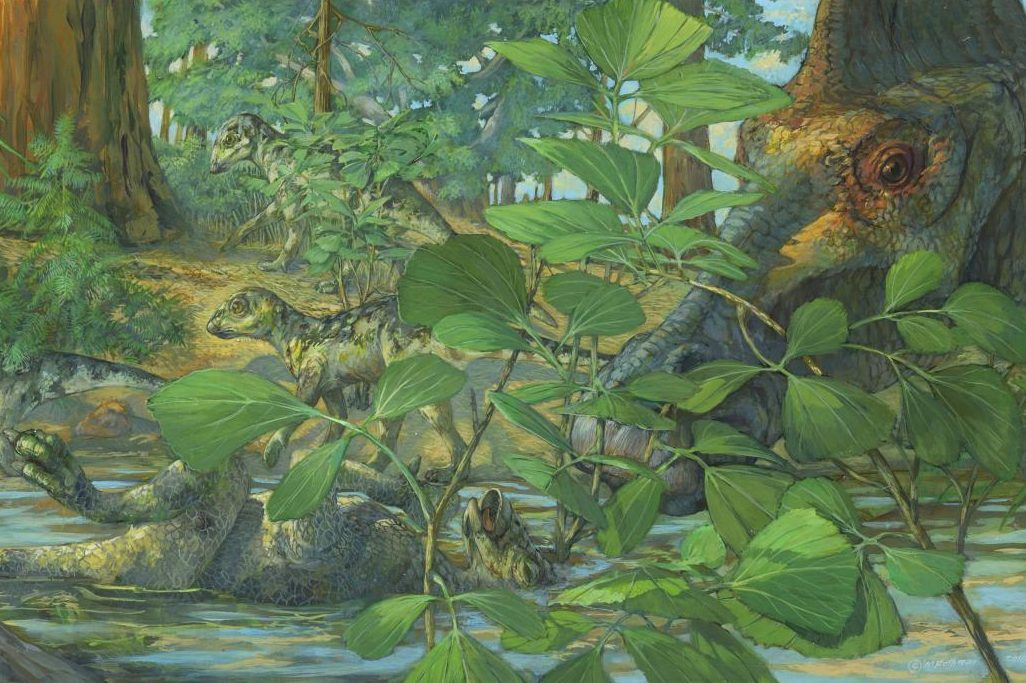The Jurassic Park dream has moved one tiny step closer to reality — as long as that reality involves a theme park filled exclusively with duck-billed dinosaurs.

Researchers say they’ve found evidence of preserved cartilage cells, chromosomes and DNA in a 75-million-year-old fossil that once belonged to a baby dinosaur. Scientists have long thought that DNA couldn’t survive longer than one million years, but the new discovery challenges that notion and could unlock the possibility of finding more dinosaur DNA in the future.
“These new exciting results add to growing evidence that cells and some of their biomolecules can persist in deep-time,” said Dr. Alida Bailleul, a paleontologist at the Chinese Academy of Sciences and lead author of the findings.
“They suggest DNA can preserve for tens of millions of years,” she said.
Bailleul and her team found the samples in the fossilized skull of a baby hypacrosaurus, a duck-billed species of dinosaur that lived in what is now Montana.

“The skull bones of baby dinosaurs are not fused when they hatch,” she said in a news release through North Carolina State University, which also participated in the study. Much like a human baby’s head, the baby dino’s skull is composed of plates that would have fused together as it aged. However, the dinosaur’s plates are cartilage, not bone.

Get daily National news
Bailleul examined those plates and found microscopic structures that looked like cells in the gaps. She enlisted a team of experts to run chemical tests on those structures and … bingo. Dino DNA. Or at least “evidence of DNA,” according to the paper.
“Although bone cells have previously been isolated from dinosaur bone, this is the first time that cartilage-producing cells have been isolated from a fossil,” Bailleul said.
The findings are published in the peer-reviewed National Science Review journal.

Mary Schweitzer, a molecular biologist who helped with the testing, said she’s hesitant to positively declare that there’s DNA within the fossil, because the notion remains controversial among scientists.
“I’m not even willing to call it DNA because I’m cautious and I don’t want to overstate the results,” she told National Geographic.
“There is something in these cells that is chemically consistent with and responds like DNA.”
Schweitzer used DNA stains to analyze the preserved samples in the fossil. The tests found several cells, including two that appeared to be in the middle of dividing.
Bailleul says the findings should help spark more research into the possibility of finding DNA in ancient samples.
“We hope that this study will encourage scientists working on ancient DNA to push current limits and to use new methodology in order to reveal all the unknown molecular secrets that ancient tissues have,” she said.
It’s still unclear whether scientists could actually sequence the alleged DNA sample, as it’s never been done for anything older than 700,000 years. They also can’t get dinosaur DNA from mosquitoes in amber, contrary to what the movies might tell you.
That means scientists are still a far cry from many people’s childhood fantasy of cloning a real-life dinosaur, a la Jurassic Park.
But one can dream, right?








Comments